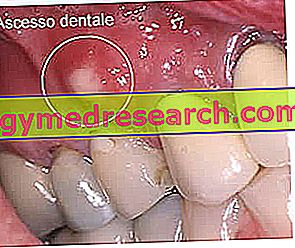Introduction
Shaving and Aesthetics of Man
The beard has always influenced philosophers, religious and writers by assuming different synonyms and meanings over the centuries.

Whichever way it is interpreted, shaving is still an art and as such must respect both aesthetic and hygienic standards. The use of the traditional razor is, for example, a very traumatic event for the skin and for this reason it requires the observance of some essential rules.
Features
Characteristics of the Beard
The beard of an adult man is formed by the set of numerous hairs, generally between 7000 and 15000. If it is not shaved, it can easily reach and exceed one meter in length, although in this case it requires special care, a little as it happens for the hair.
The speed of growth, as well as the other factors that characterize it (thickness, color, size of the follicle) depends on genetic and biological characteristics (race, age, state of health, etc.).
Shaving irritations
Shaving is not as simple a procedure as one might imagine. In fact, shaving operations require a certain manual skill and the observance of numerous attentions. Without compliance with these rules, the daily passage of the razor can lead to the appearance of rather frequent irritations such as dermatitis and irritative folliculitis.
Irritative Dermatitis
Irritative dermatitis is a general condition of skin irritation. It manifests as redness, burning and hypersensitivity of the skin following shaving. It is a fairly common disorder that occurs especially in the most sensitive skin.
In this case it is very important to choose the correct products to apply to the skin before and after shaving. A gel with a strong emollient action is for example more suitable than traditional foam; aftershave should instead have a soothing and astringent action. The same cosmetic products, in turn, could be directly responsible for the dermatitis that manifests itself in these cases as an allergic contact reaction (skin redness, itching, etc.).
Irritative Folliculitis
The irritative folliculitis is distinguished instead by the appearance of a point-like redness in correspondence of the hair follicles involved. It is not strictly related to the type of skin, but to the shape and arrangement of the follicles. Africans, for example, are more sensitive to this problem because curly hair is particularly prone to re-growth under skin after shaving.

If the disorder occurs frequently, it is advisable to consult a dermatologist who will recommend specific products that can promote the release of ingrown hair . These products act to thin the superficial horny layer and generally have an antiseptic action to prevent any infections.
In order not to cause further trauma to the skin, in the presence of folliculitis it is good to stop shaving for a few days. The passage of the razor could in fact transmit the infection to the surrounding follicles generating a much more extensive pathological picture called sicosi.
Useful Tips
Useful tips for a perfect shave and to prevent irritation
So shaving - considered by some as an essential rite, by others like a big nuisance - requires the observance of some important rules. First of all, it is useful to remember that the best time to shave is in the morning, because at this time of the day the facial muscles are more rested, hydrated and less tense.
Before shaving
- Before shaving, rinse your face with warm water or use a towel soaked in warm water to leave in contact with your skin for a few minutes.
In fact, hydration and heat have a strong emollient effect that favors the passage of the razor between the hairs. For this reason, an excellent choice is to shave immediately after the morning bath.
- Apply a light layer of foam on the face and wait a few seconds for it to perform its emollient action. In this way the hair will become more erect and soft and will resist less shaving resistance. In case of a particularly hard beard, it may be useful to apply a layer of pre-shaving lotion massaging the skin for a few seconds.
During shaving
- Rinse the razor with warm water and pass it on the skin following the direction of hair growth. Start from the sideburns where the skin is less sensitive and adapt the razor inclination according to the layout of the beard.
- After each pass, rinse the razor thoroughly with warm water to eliminate the foam and hair remaining between the blades.
- After the first pass according to the hair growth direction, it is possible to pass the razor in the opposite direction (counter-hair), possibly applying a new light layer of foam beforehand.
- In humans, the thin hydro-lipid film that protects the skin is superior to women, but the continuous razor passes can eliminate it little by little, exceeding its regeneration rate. For this reason the passages of the blade on the same point must be as limited as possible. Not surprisingly, the engineers' attention is focused on the discovery of new technologies that reduce the number of passes to a maximum (see razors with 3 and 4 blades).
- In the case of acne skin, it is necessary to pass the razor with extreme delicacy to avoid further stressing a skin already tested by acne manifestations.
- In case of sensitive skin, shaving with an electric razor is more suitable, possibly giving a last and only pass with the blade to perfect the result.
After shaving
- Rinse your face thoroughly with cold water. In this way the closing of the pores will be facilitated by alleviating any irritation and decreasing the risk of infection.
- Apply an aftershave lotion, possibly alcohol-free, with a moisturizing and disinfectant function.
- Despite what one might think, acne skins must be carefully hydrated at the end of shaving by using products suitable for this particular type of skin.
- In case of minor scratches or cuts it is important to disinfect the wound by pressing with an alcohol swab. Alternatively, you can use an astringent gel based on ammonium chloride with a disinfectant and anti-haemorrhagic action.
Other tips
In case of uncertainty about which are the right products to use before and after shaving, surely it may be useful to make a preventive visit by a dermatologist who will be able to recommend the most suitable products to take care of your skin.
Furthermore, resorting to skin exfoliation can be a very effective method to facilitate shaving operations and prevent the growth of ingrown hairs. Through the use of scrubs, in fact, it is possible to remove the dead cells present on the skin surface, making the skin softer and freeing the ostium of the hair from possible cellular debris. In this way, the hair is able to grow back without incarnating (for more information: Ingrown Hairs).
Myths to dispel
Urban legends and myths about debunking shaving
There are many urban legends and myths about shaving beards, some of which lack any kind of scientific foundation. Below, the most popular ones will be listed.
Shaving daily allows for faster growth of the beard
The cliché according to which shaving every day would make the beard grow faster and more evenly is completely false. The speed and place of hair growth, in fact, are influenced by genetic factors, hormonal factors and non-hormonal factors, such as blood flow and skin temperature (for more information: Hair Growth). Therefore, it seems clear that shaving frequency cannot affect the beard regrowth in any way.
Shaving often strengthens the hair and makes it thicker
Here is another myth to be debunked.

In fact, when one shaves, one limits oneself to mechanically removing the hair shaft, whose thickness can certainly not be modified by this type of operation, since it is influenced by different endogenous factors.
The razor or blades must be replaced every week
This is also a rather commonplace commonplace. In reality, the razor or blades do not necessarily need to be replaced weekly. This is because the "duration" of the razor blades varies according to various factors, such as the type of blade used, the brand and the frequency with which one shaves.
Therefore, the decision to replace or not the razor (in case of disposable products) or the blades (in case of razors with interchangeable blade) is strictly subjective and individual. However, in principle, it is advisable to carry out the replacement when you notice that shaving is no longer optimal and / or when you feel a sensation of skin pulling when the razor passes.



